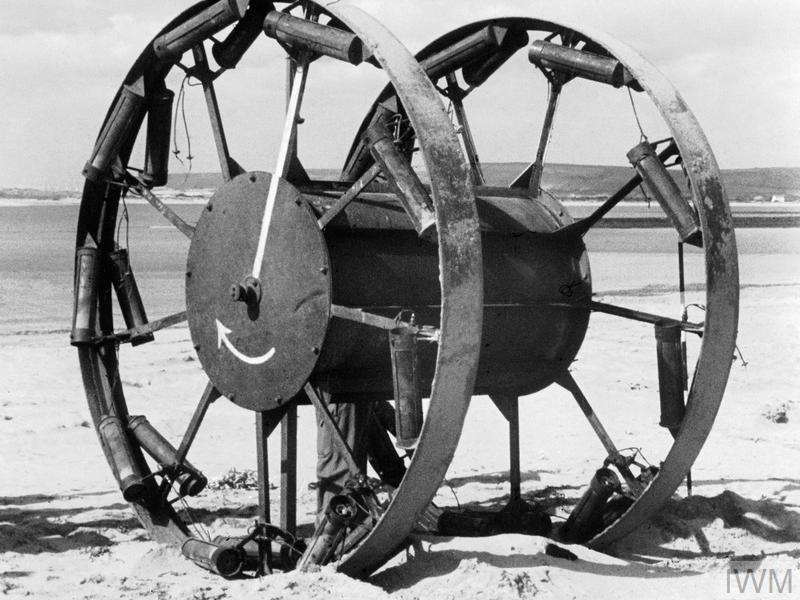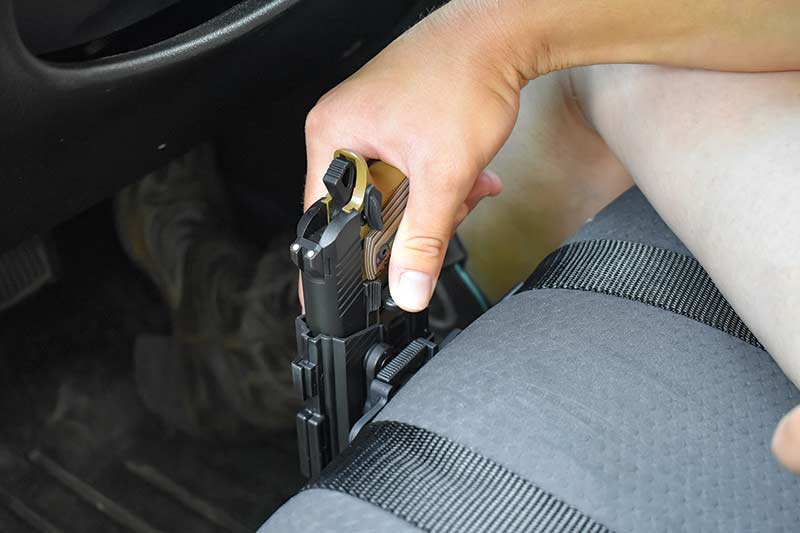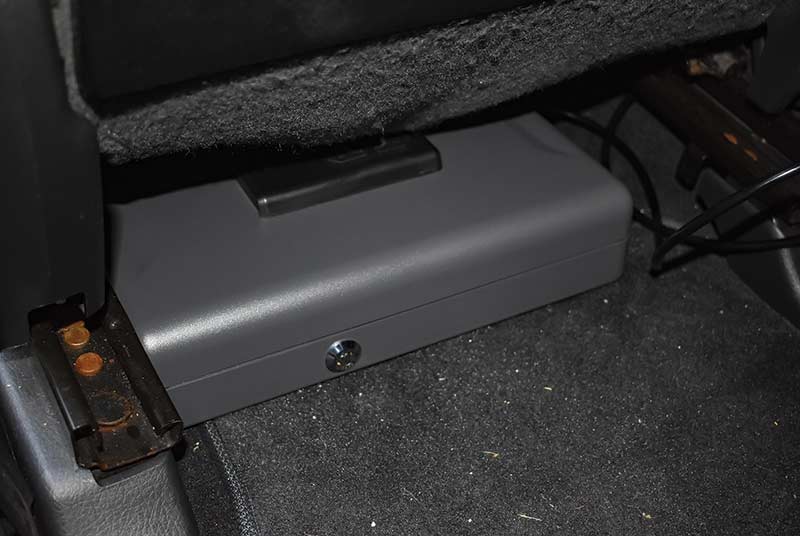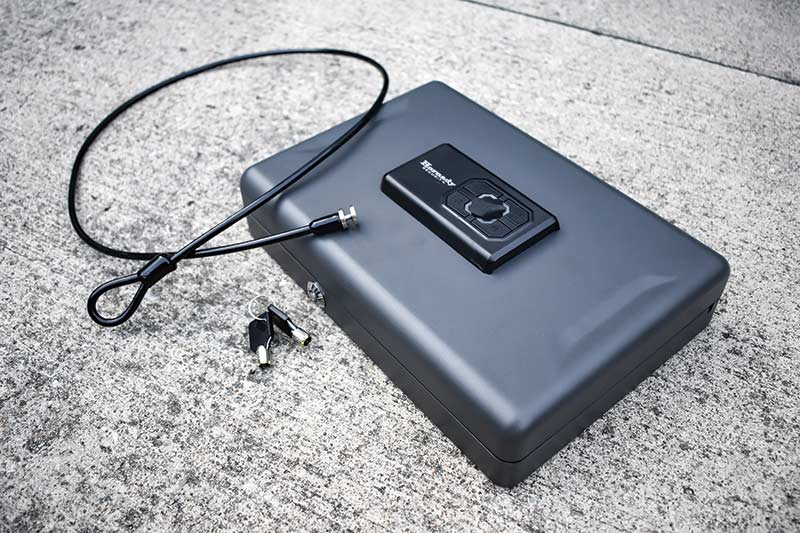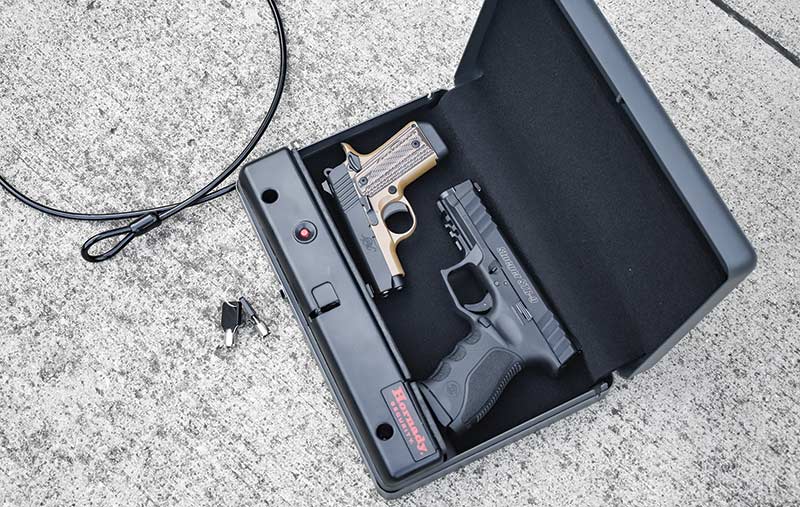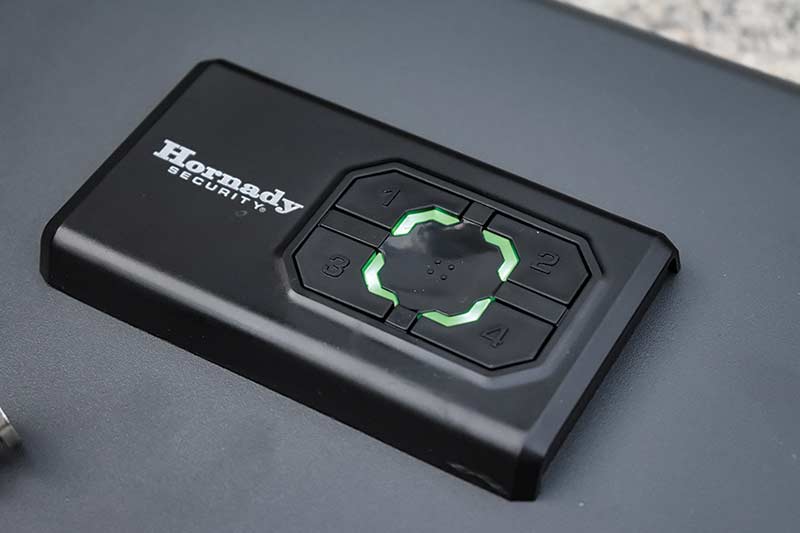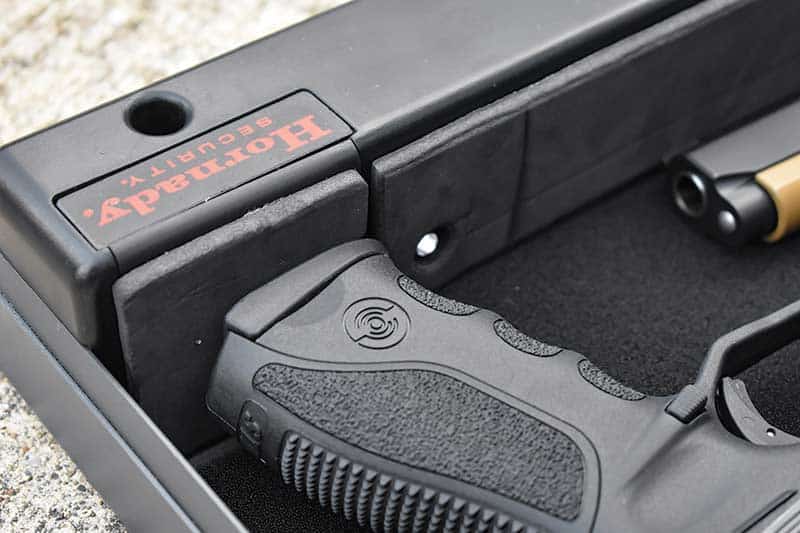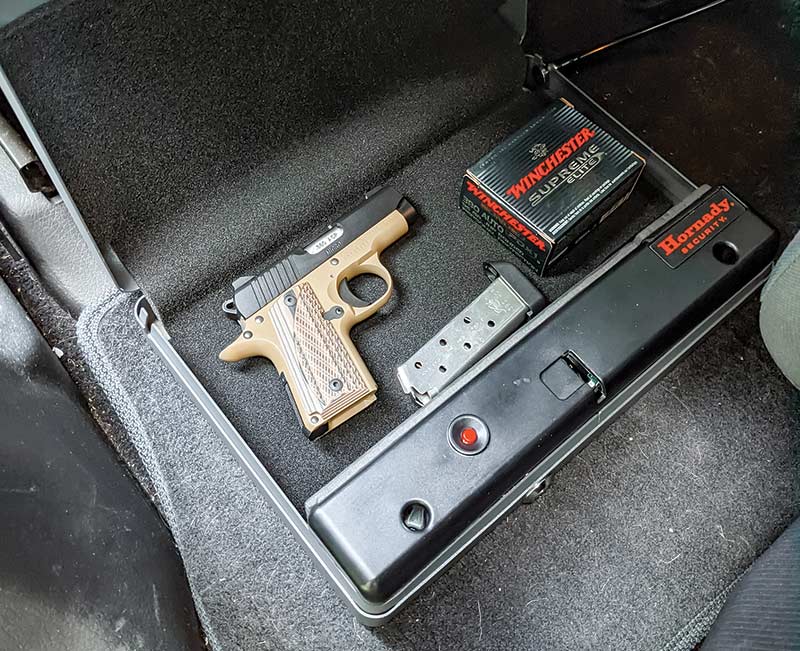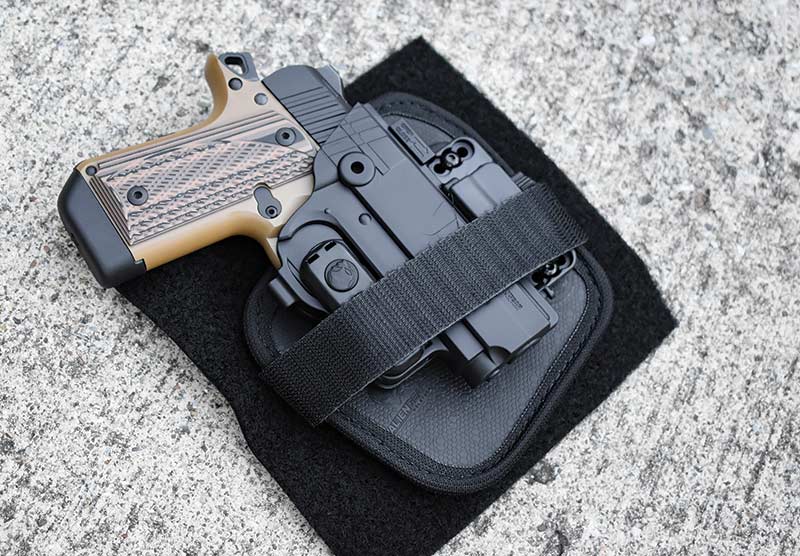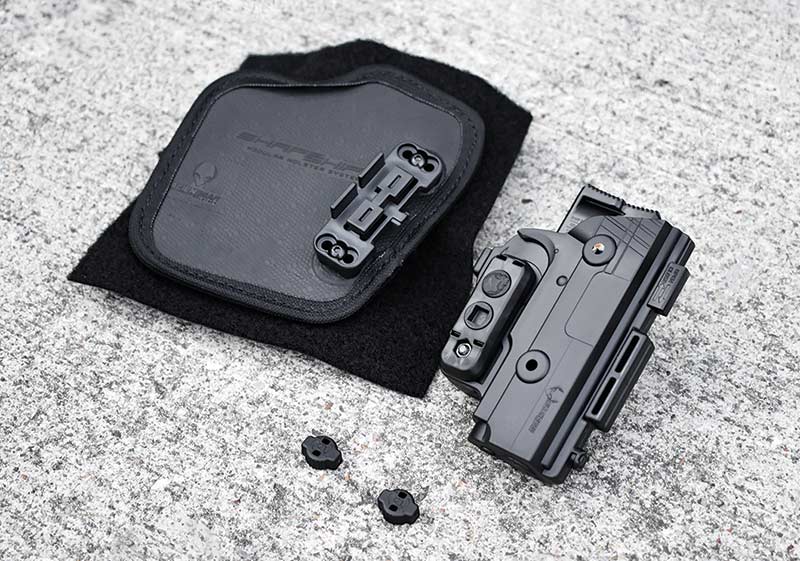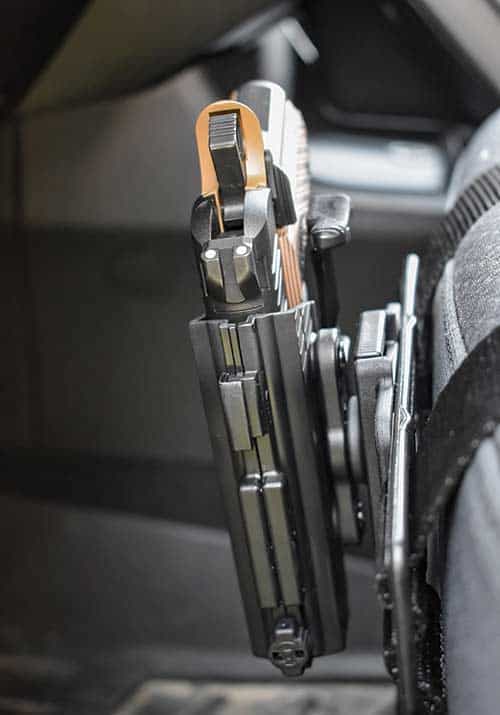 Now that would leave a mark that even bondo would be hard put to fix! Grumpy
Now that would leave a mark that even bondo would be hard put to fix! Grumpy

In 1905, the model room at Smith & Wesson’s plant in Springfield, Mass., was astir with activity. The firm had enjoyed 50 years of progress in gunmaking and was determined to go forth in the new century as the leader in handgun development and production. S&W was in the process of modernizing its revolvers to meet the challenges of the day. In the early 1890s, it had developed its first solid-frame revolver with a swing-out cylinder.
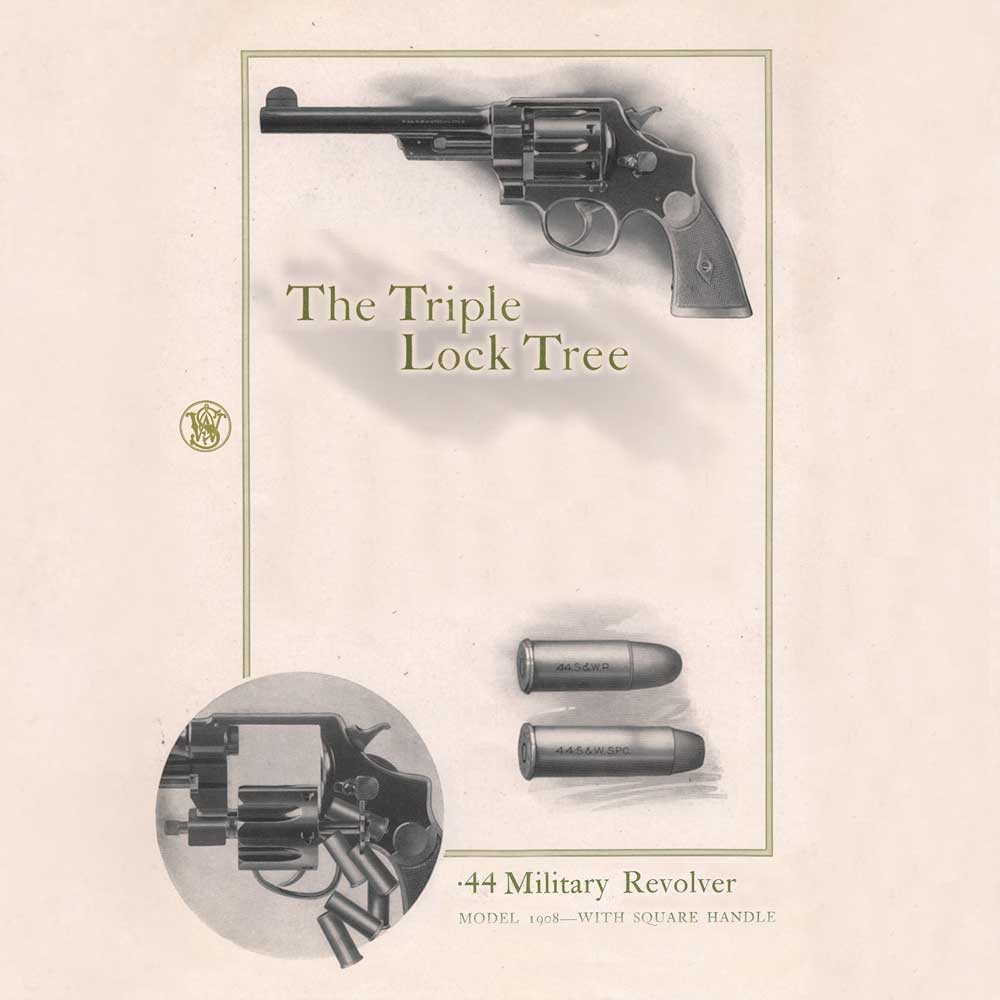
Chambered in .32 caliber, these guns were well-received and, a few years later, were joined by an even better series of revolvers in .38 caliber. The firm pressed on with what it knew was necessary for a complete line of modern revolvers: a big bore. In 1907, it offered a modern big-bore revolver and a completely new cartridge to go with it. The cartridge was the legendary .44 Special, and the revolver was the .44 Hand Ejector. Officially dubbed the New Century Model, the gun quickly acquired a nickname that persists to the present day—the Triple Lock.
The first Triple Locks left the factory in 1908 and were immediately accepted as superbly crafted service gun chambered for a great new cartridge. The name comes from a unique feature that was not included on any other S&W before or since. In addition to the pair of locking points with which we are familiar—in the frame at the rear end of the cylinder’s center pin and at the extreme forward end of the pin at a lug on the barrel—the new gun had a third one. The barrel’s underlug had an internal cavity that housed a spring-loaded plunger that locked into a hole in a hardened insert in the swing-out yoke. However, making this system work with the smoothness and precision the company prized was not easy. It required precise hand fitting of parts manufactured to exacting tolerances. Some authorities have asserted that Smith & Wesson devised the system to showcase its skill, and not because there was a mechanical requirement for it.
Perhaps that is true, but the major point of this story is simply that the Triple Lock was the first revolver built on what the factory calls the “N-frame.” Further, this frame is the foundation for a series of modern revolvers that have served the nation’s handgunners, with no small distinction, in peace and war. Virtually all of the company’s many technical and practical innovations were first seen on an N-frame revolver. It is literally the “tree” from which grew the most innovative revolvers of the 20th Century, and it established a solid reputation for quality for the New England gunmaker who planted the seed.
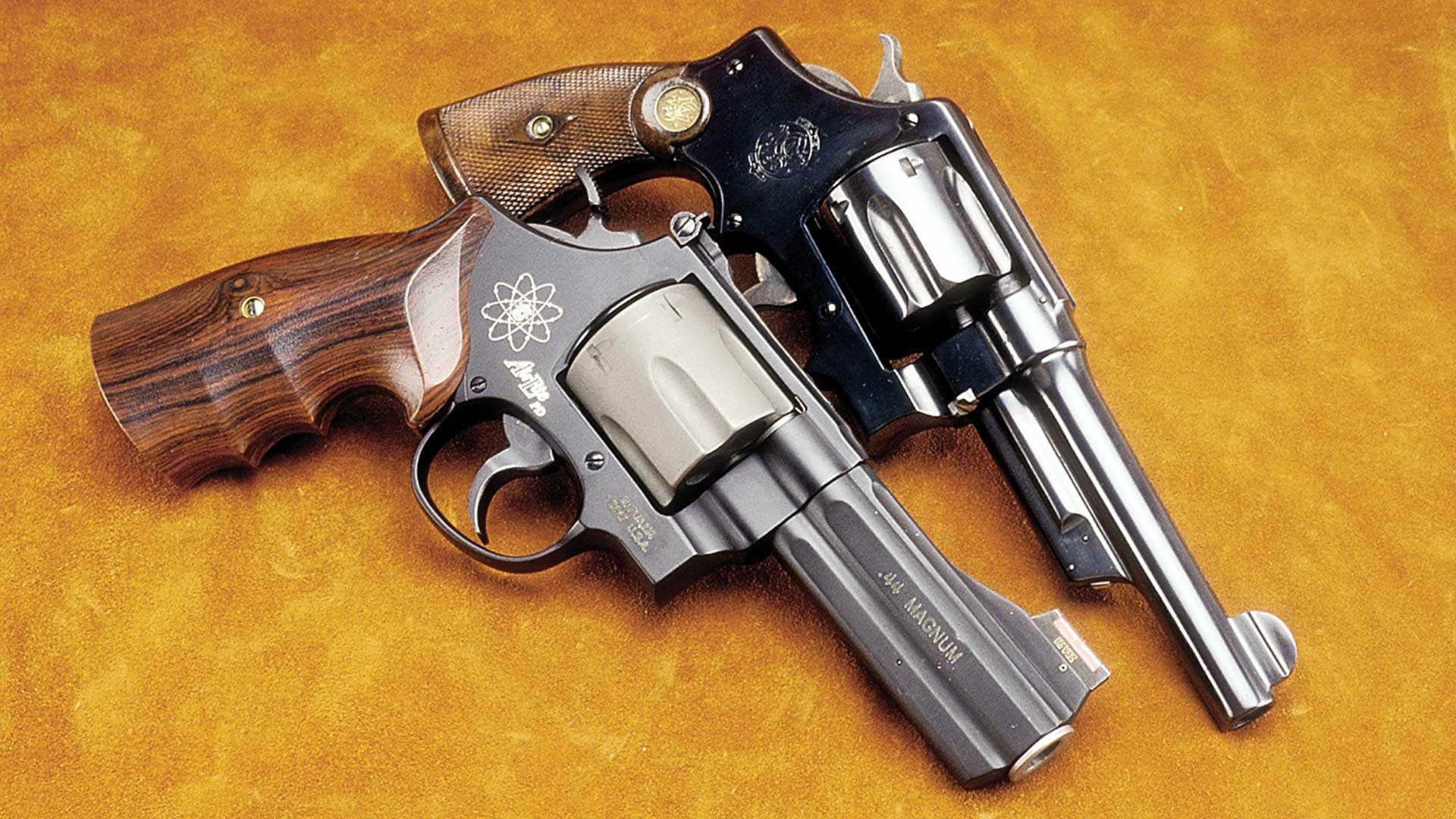
The Triple Lock .44 Spl. guns, called 1st Model .44 Hand Ejectors by collectors, were mostly all made in the new caliber. Although relatively few were made, Triple Locks were also manufactured in .38-40 Win., .44-40 Win. and .45 Colt, as well as a rather large batch of .455s for World War I service with the British military. Within a few years of their introduction, it became apparent to the factory that the third lock was tedious to produce on a mass-production basis. When the British entered World War I, they ordered large quantities of revolvers for their troops. The first 5,000 or so of these guns were .455 Triple Locks, but the mud of the trenches was not kind to that finely fitted mechanism. S&W abandoned it in favor of a barrel shaped much like the tapered round barrel of its Military & Police Model in .38 Spl. The new shape omitted the complex contours of the protective shroud that surrounded the ejector rod. Many more of these models were made for the British, and the factory went forward with the design for its domestic production. Collectors identify this model as the 2nd Model .44 Hand Ejector. Like the 1st Model, it came with 4″, 5″ and 61⁄2″ barrels.
One of the most interesting and historically significant variations of the 2nd Model came to be as a result of America’s entry into World War I. When General Pershing ordered a handgun for every one of his infantrymen, the several factories producing the new M1911 .45 ACP automatic pistols could not meet the demand, but both Colt and S&W had big-bore revolver production lines up and running. Both converted quickly to produce large revolvers chambered for the standard 230-gr. FMJ ammo used in the Colt semi-automatic. It remained for Joe Wesson to come up with the ingenious half-moon clip that adapted the rimless .45 ACP round for use in a revolver. The same basic idea is used today to allow a wide variety of pistol rounds to be used in revolvers. It worked very well, and S&W produced 150,000 Model 1917 .45 ACP revolvers during the war years. With their Ordnance-mandated 51⁄2″ barrels and lanyard rings, these rugged revolvers were essentially 2nd Model Hand Ejectors.
“S&W’s Triple Locks are the foundation for a century of progress in revolver making.”
When the war was over, S&W continued to produce the 2nd Model .44 Hand Ejector in three barrel lengths and a civilian model variant of the 1917 in 51⁄2″ length. Most of the guns were made in .44 Spl. but other calibers such as .44-40 Win. and .45 Colt are known, as are Target Models with a high front sight and adjustable rear sight. In time, however, the factory began to get requests for a barrel shape similar to that of the Triple Lock, even if it did not have the expensive third locking system. When a leading S&W dealer, Wolf and Klar, ordered 3,500 such guns, it was enough to trigger production, and the resulting guns came to be called 3rd Model .44 Hand Ejectors. These rugged, heavy N-frames were produced until World War II. Interestingly enough, they were produced in a separate series from the 2nd Models, which also continued until the 1940-1941 period. In essence, this model came to be synonymous with a heavy, rough, service handgun and was particularly well received in the Southwestern and Western United States.
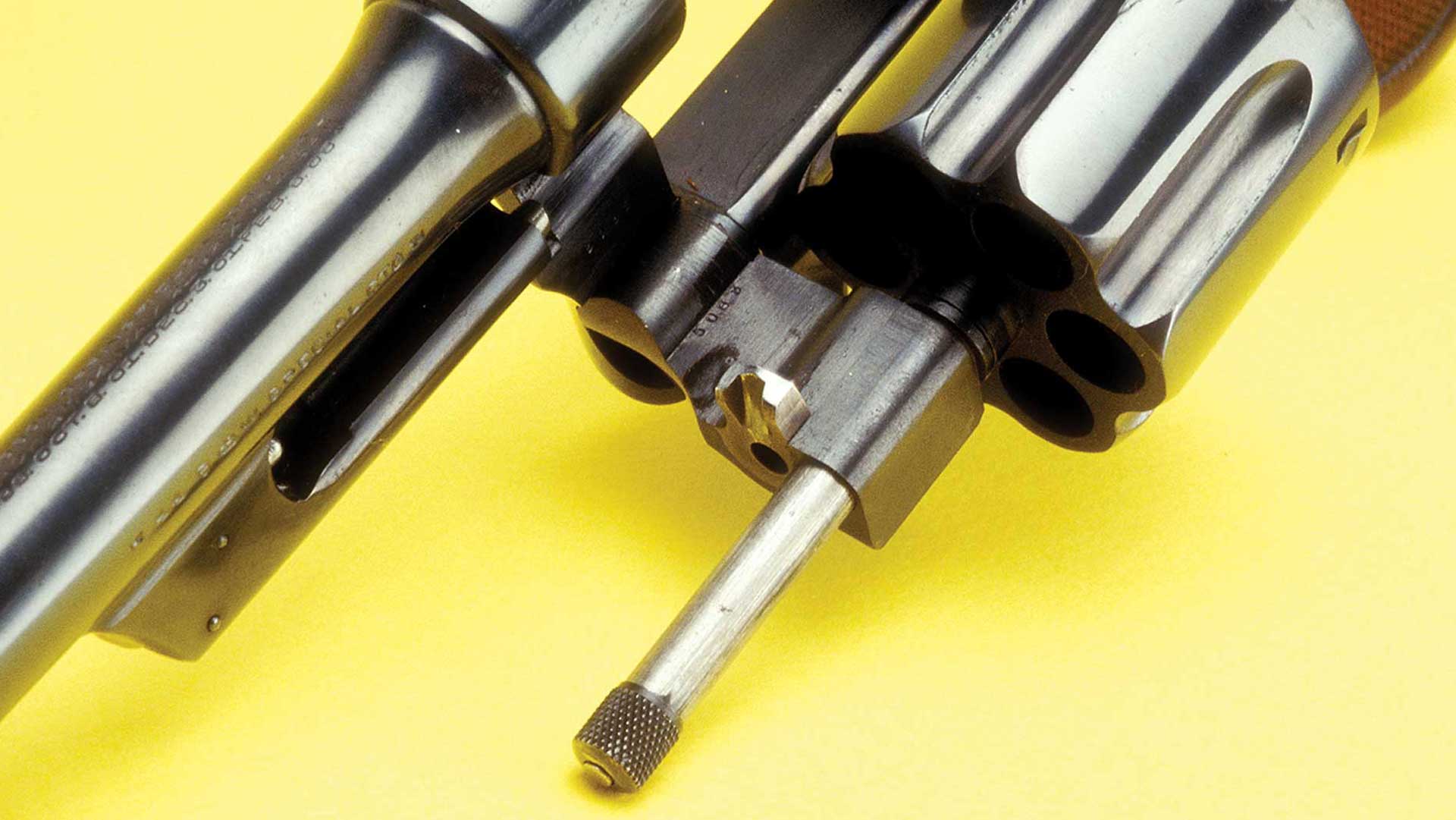
In the 1920s and 1930s, other forces were at work in society and they were to have a profound effect on the arms industry in general and Smith & Wesson’s products in particular. For one thing, there was a marked rise in armed violence due to the lawless atmosphere surrounding Prohibition and the Great Depression. For another, a number of sportsmen were beginning to use their double-action revolvers as field and hunting arms, a role for which there was no great history. Gradually, a demand evolved for revolvers with greater performance potential, particularly in the sense of penetration. S&W’s initial response was in the form of a .38 Spl. revolver built on the N-frame and called the .38-44 Heavy Duty. At the same time, the ammo makers began to offer special .38-44 ammunition, which was simply .38 Spl. loaded to a higher velocity and not suited for use in lighter guns.
Eventually, the sporting market came to demand better sights and other options on the new beefy .38 Spl. revolver. S&W introduced the Outdoorsman to fill this need, and the gun was very well accepted. Equipped with adjustable target-style sights and available with other features, the Outdoorsman was popular with a growing coterie of handloading handgunners who felt the need for speed. Eventually, such authorities as Phil Sharpe and Elmer Keith used every last bit of space in the .38 Spl. case and cried for more. They got it in 1935, when S&W introduced the spectacular .357 Magnum. The gun itself was built by special order on N-frames, using a special grade of steel in the cylinders. The best fitters in the plant were chosen to put together these revolvers, which were available in any barrel length the buyer specified from 3&1⁄2″ to 8″. There were many options in sights, hammers, actions and grips. The buyer could get an inscribed certificate of ownership, many of which somehow managed to stay with the gun. To top it all off, each revolver came marked with a registration number neatly stamped inside the yoke cut.
The “Pre-War Registered Magnums” were probably the finest N-frames ever built, and the .357 Mag. cartridge was one of the most influential of all time. S&W heir Col. Douglas Wesson actively promoted the gun with well-publicized hunting trips. Before the Springfield plant halted commercial production to change to World War II work, the demand for the .357 Mag. was so great that it was necessary to drop the gun from special-order status and produce it as a regular catalog item.
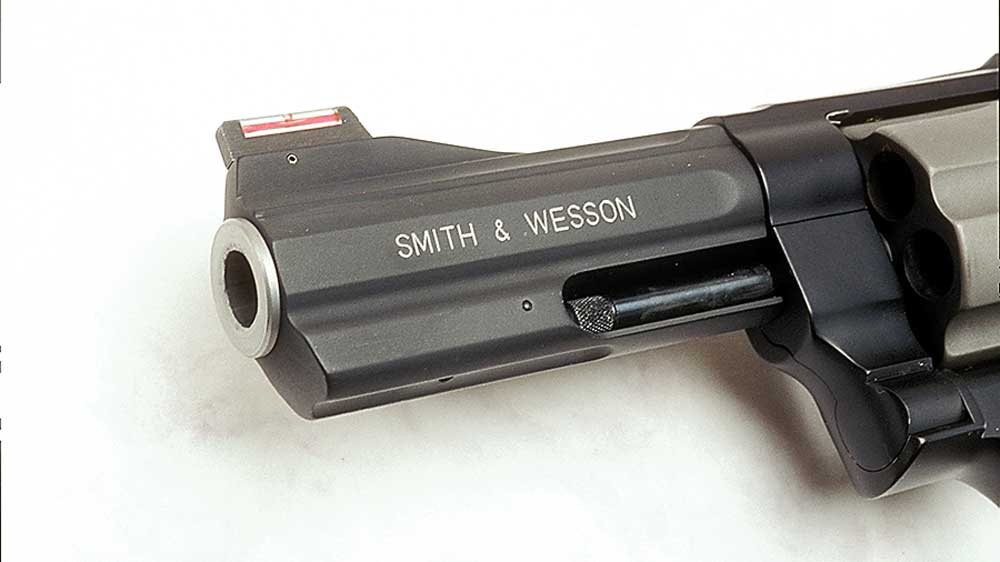
During the World War II years, the factory officially produced only K-frame Victory Models, but a trickle of special .357s may have been produced. When the war ended in 1945, S&W was left with worn equipment and excessive bills, but it also hired an energetic Swede named Carl Hellstrom as President. Hellstrom set about modernizing the line with some new models, but also brought back the best of the pre-war guns. It was literally the start of a new era for the fruit of the now-mature Triple Lock tree.
When the plant developed a fancy new short action for the revolver line, collectors referred to it as the .44 Hand Ejector, 4th Model. By 1957, Smith & Wesson returned to the old system of assigning model numbers to its guns. The fixed-sight N-frames in .38 Spl., .44 Spl. and .45 ACP became the Models 20, 21 and 22, respectively. Adjustable-sight N-frames grew in popularity and the .38, .44 and .45 guns came to be called the Models 23, 24 and 25. Actually, there was also a Model 26—a .45 ACP with the classic tapered barrel called the 1950 .45 Target. The immensely popular .357 Mag. was back in a selection of barrel lengths as the Model 27. For the working stiff, S&W offered a plain-Jane, blue-collar .357 Mag. called the Model 28. For a long time, that durable matte blue revolver was the best dollar value in the catalog.
The last in the sequence of N-frame numbers was the gun that defined the post-war N-frame. It was the Model 29, chambered for the new (1956) .44 Magnum cartridge. This round was a logical extension of the reasoning that started with the .357 Mag. In addition to velocity a’plenty, the larger bore of the Model 29 also permitted heavier bullets, usually in the 240- to 250-gr. range. S&W had been barraged with requests for such a gun, many of them coming from a loose confederation of handloading experimenters known as “The .44 Associates.” Elmer Keith had wrestled the absolute most in the way of performance from his beloved .44 Spl. loads and knew there was a need for the .44 Mag. Indeed, the gun was popular when introduced, but went out of sight when Clint Eastwood used it in a famous movie in the early 1970s, after which Models 29s were extremely hard to get for a time.
In 1964, close on the heels of the mighty .44, came another S&W Magnum. It looked the same, but had a smaller bore, measuring an exact .410″. The .41 Magnum began as a police service cartridge where it served very well in a few scattered venues. However, despite its limited law enforcement success in a fixed-sight N-frame—the Model 58—the cartridge did a lot better in another big N-frame called the Model 57.
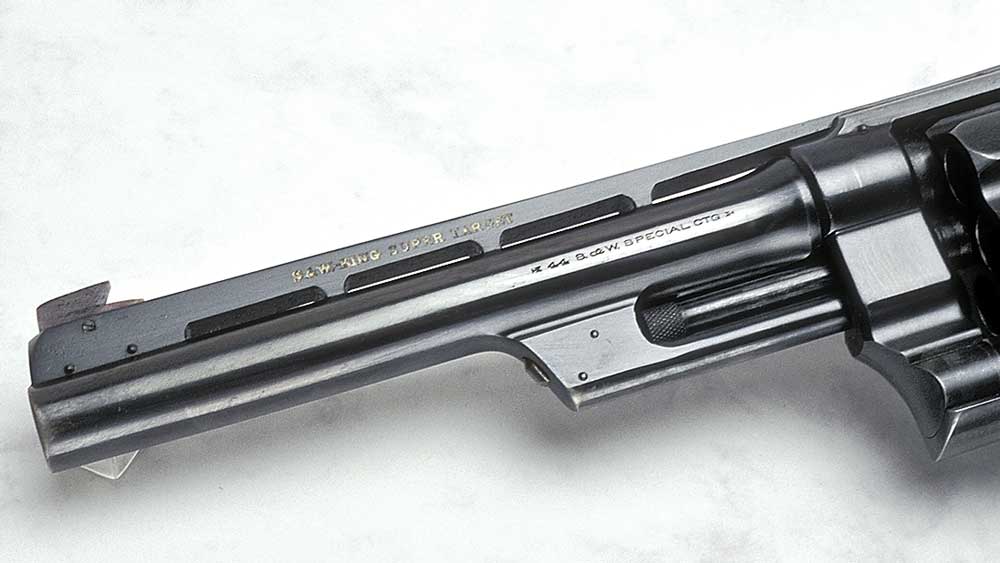
Smith & Wesson’s .41 Mag. still enjoys an almost cult-favorite status among handgunners, particularly those who handload their own ammunition. In 1966, the factory discontinued many of the slow-sellers in the N-frame lineup. This included the fixed-sight guns and such favorites as the Model 24, or 1950 .44 Spl. Target. Anguished cries of protest returned this one classic to the line for a time in the 1980s.
Smith & Wesson had pioneered the use of stainless steel in revolvers with the J-frame Chiefs Special in the 1960s. By the late 1970s, many of the bigger N-frame revolvers became available in the rust-resistant material. Model numbers for these guns include the number “6” in front of the original model number, making a stainless Model 29 a Model 629. Using stainless steel for handguns is only one of S&W’s 20th Century innovations, but it is one that’s here to stay. At the time of this writing, there is only one carbon steel revolver left in the S&W line; everything else is stainless.
Technology had come to the plants where ammunition is developed and produced, but it has had both good and bad effects. In .44 Mag., for example, the use of heavy bullets at higher velocities undoubtedly increased performance, but it also accelerated wear on the N-frame .44s. To keep their products fully competitive, S&W designers came up with an addition to the lockwork—a so-called “bolt block”—that added to the gun’s versatility. In the late 1980s, we began to see a much wider variety of variations of the basic Model 629s, including the Model 629 Classic DX series, with a heavy, full underlug barrel.
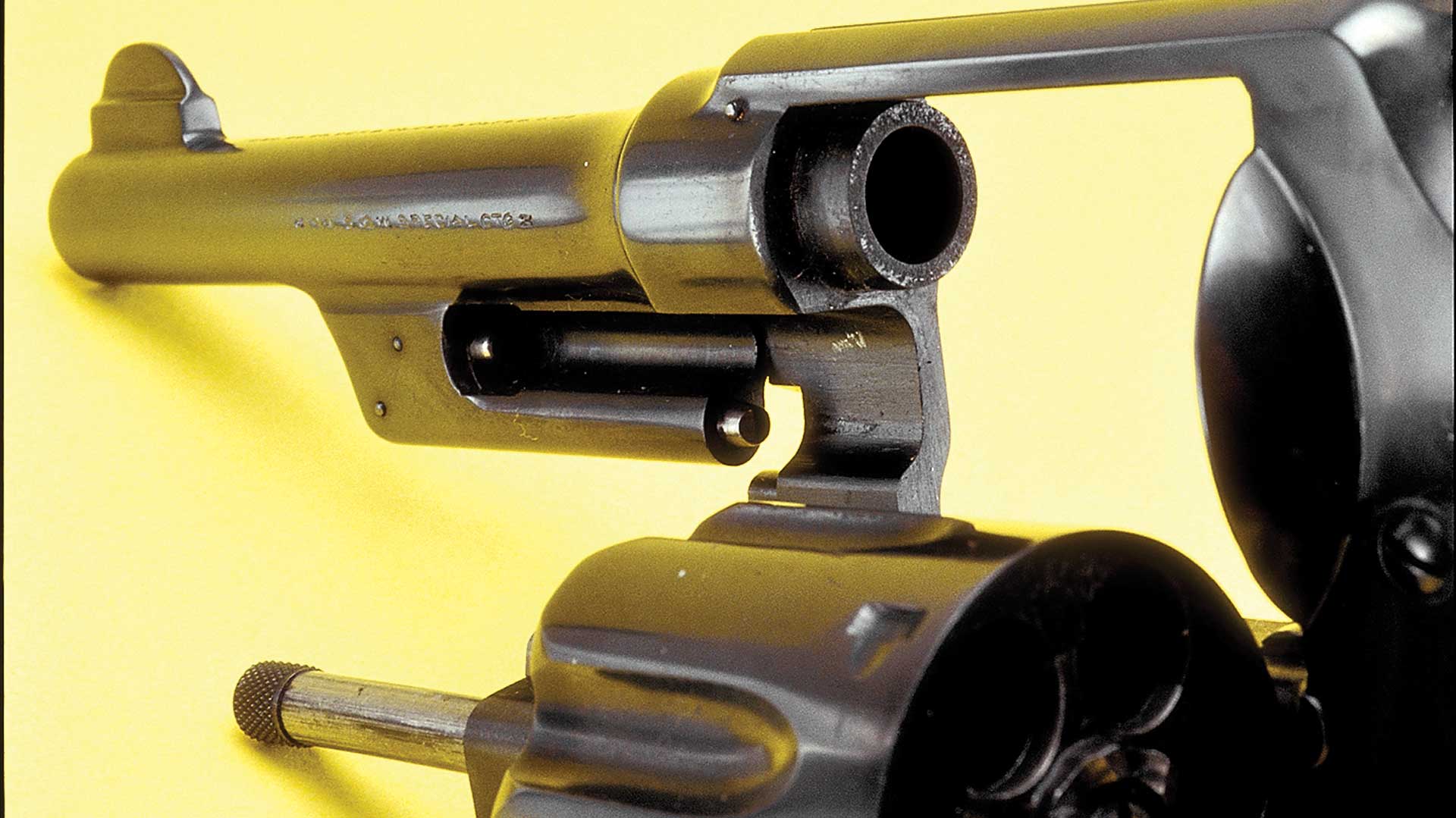
Collectors know there are endless variations on all of the basic models. There have been small numbers of N-frames made in such odd calibers as .30 Carbine and .38 Super. Unusual barrel lengths like 5″ pre-war Outdoorsman and (possibly) 31⁄2″.38-44 Heavy Duty .38s occasionally turn up, and such variants as lightweight alloy N-frames are fully documented. S&W’s Performance Center annually produces a number of unusual N-frames. Currently, the hottest thing going is the scandium alloy N-frames in both .44 Mag. and .45 ACP.
Above all, it’s important to understand that the Smith & Wesson N-frame revolver literally defined the big-bore wheelgun in the 20th century. It had stiff competition from Colt’s fine New Service in the early years, but pretty much dominated in the latter half of the century. For collectors, the variations are endless, but the gun was made for American shooters. And American shooters have been using them in many calibers since the first Triple Locks came out of the old plant in 1908.
*Photos and story by Field Editor Wiley Clapp
Yes indeed I shall!
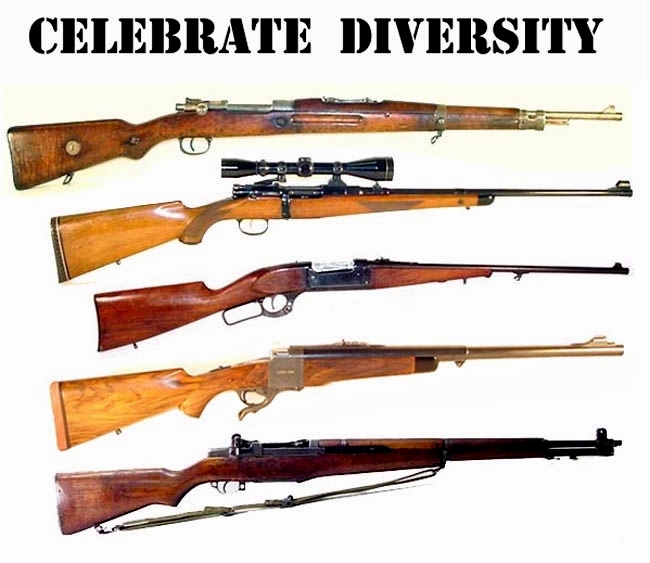
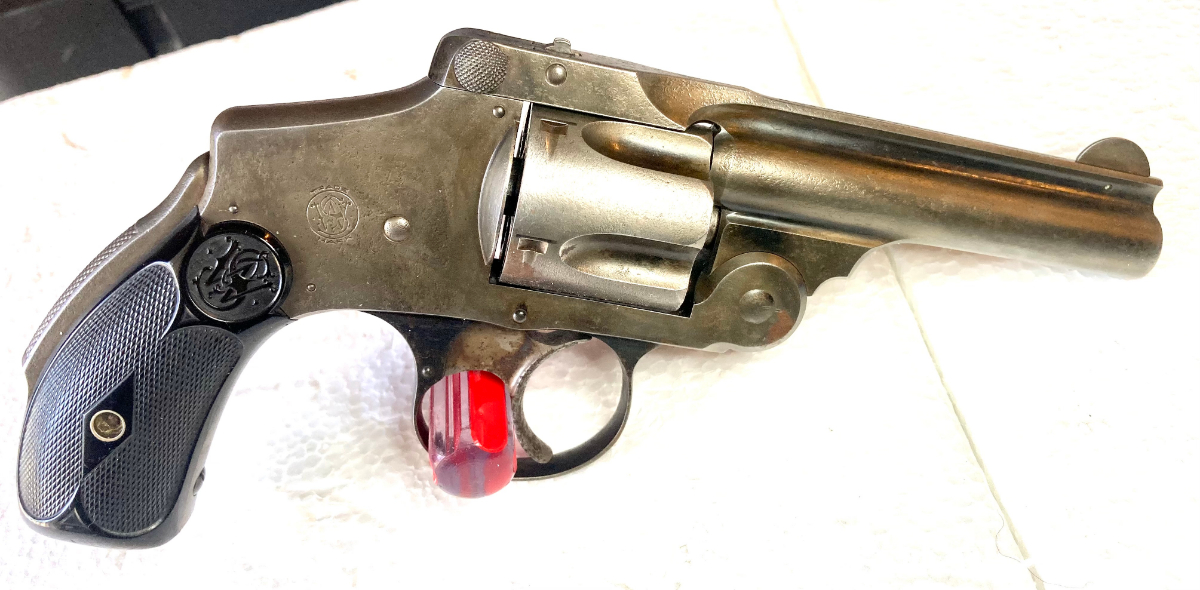
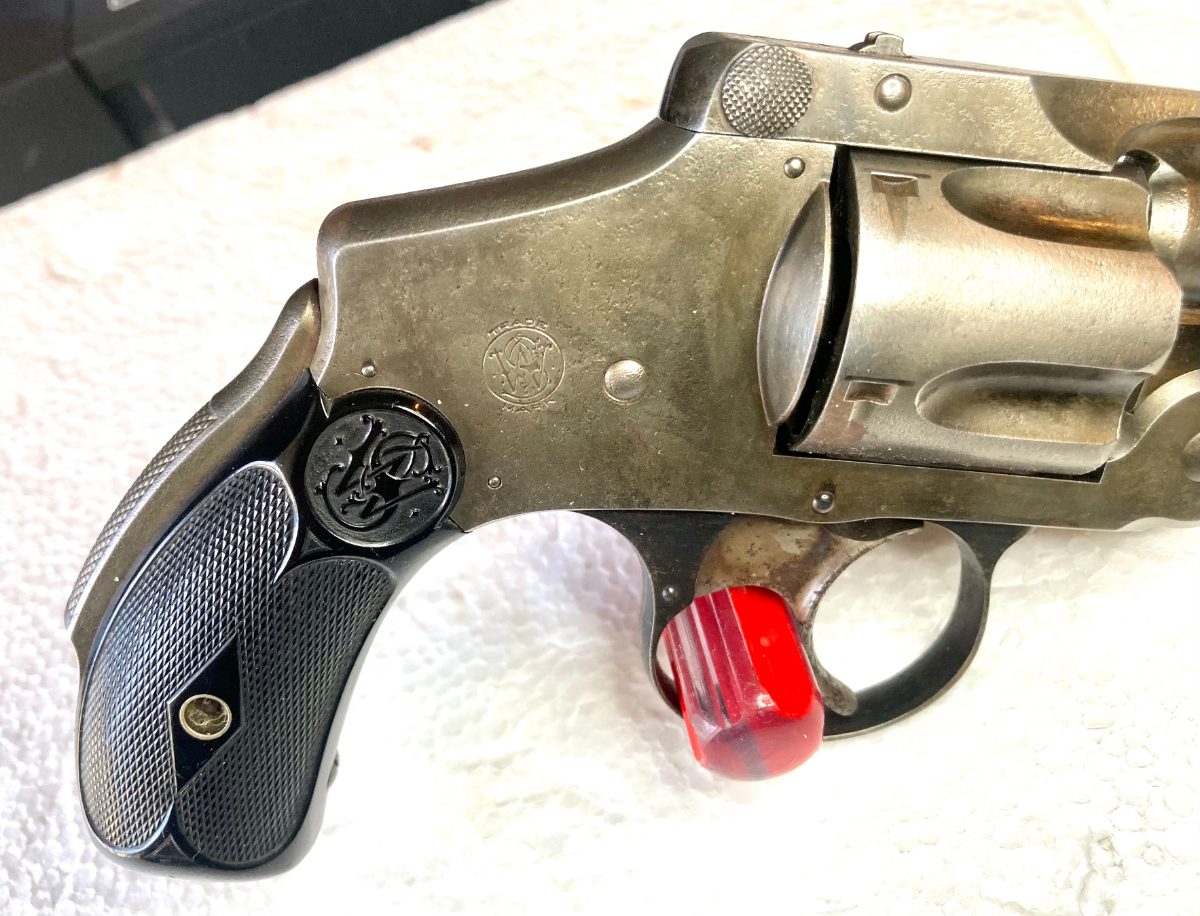
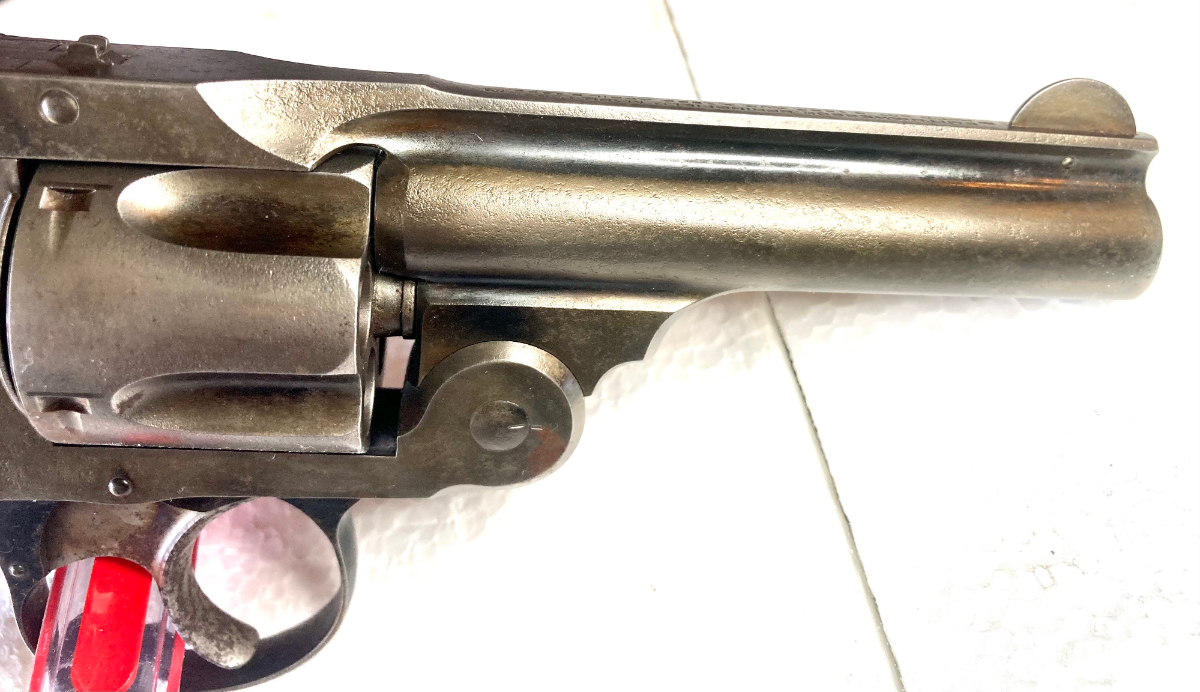
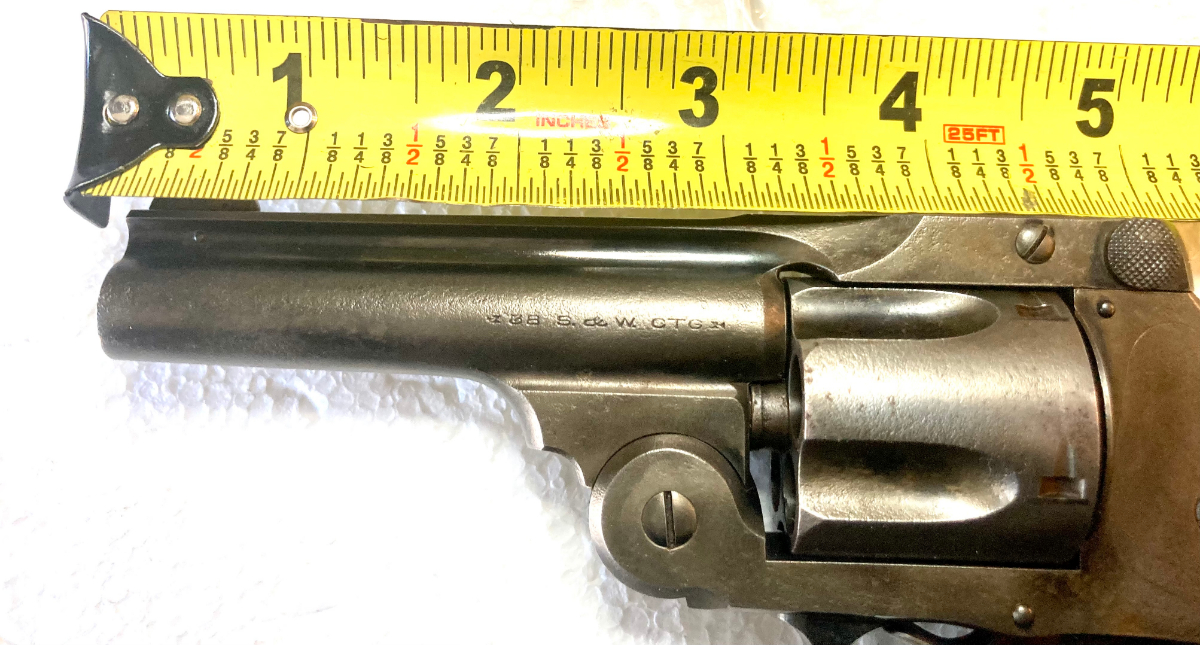
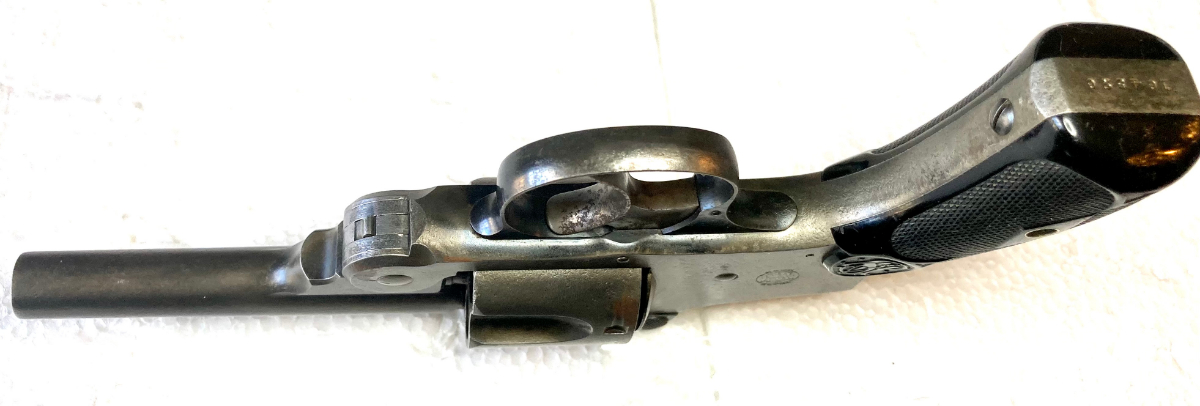
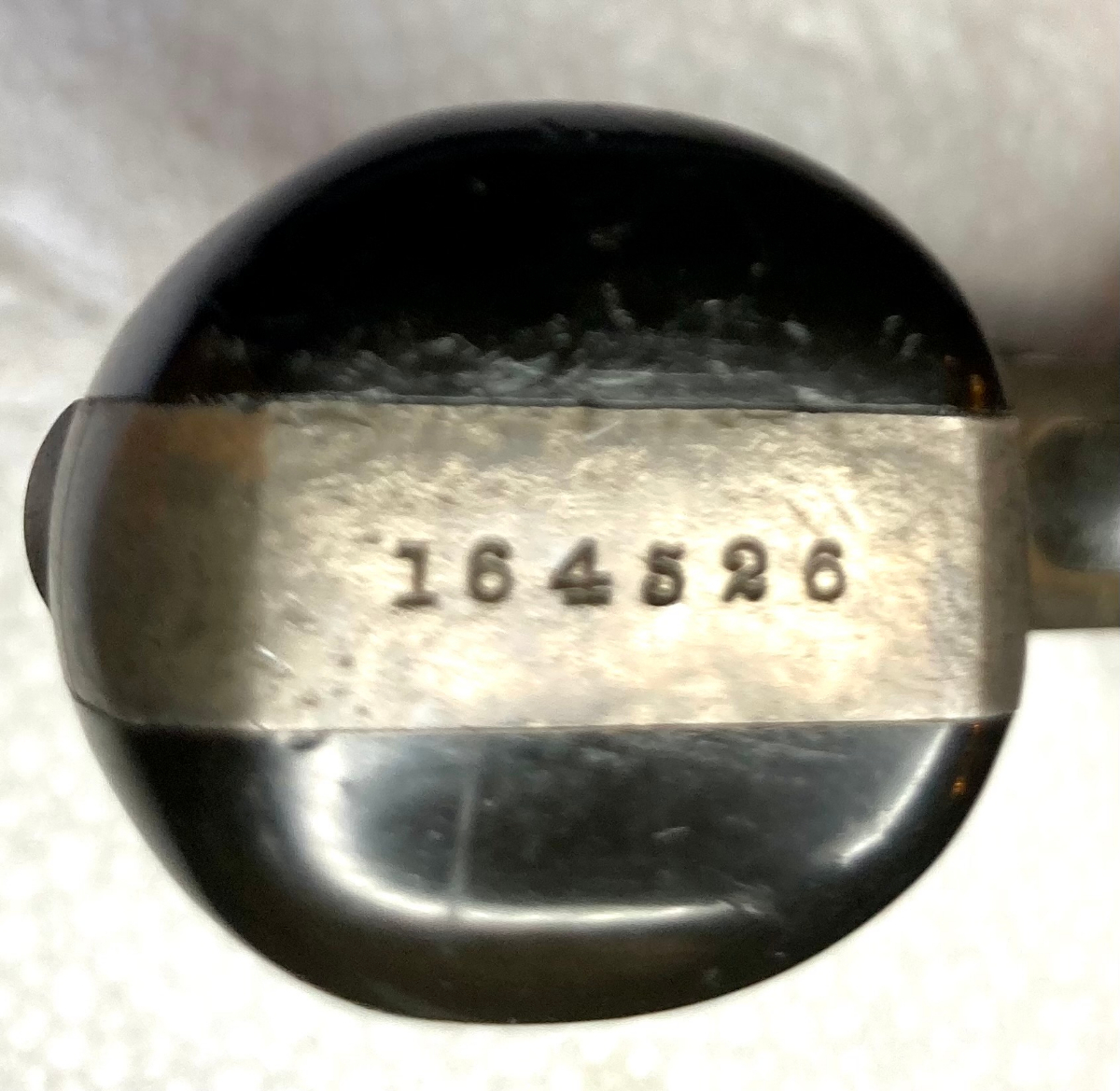
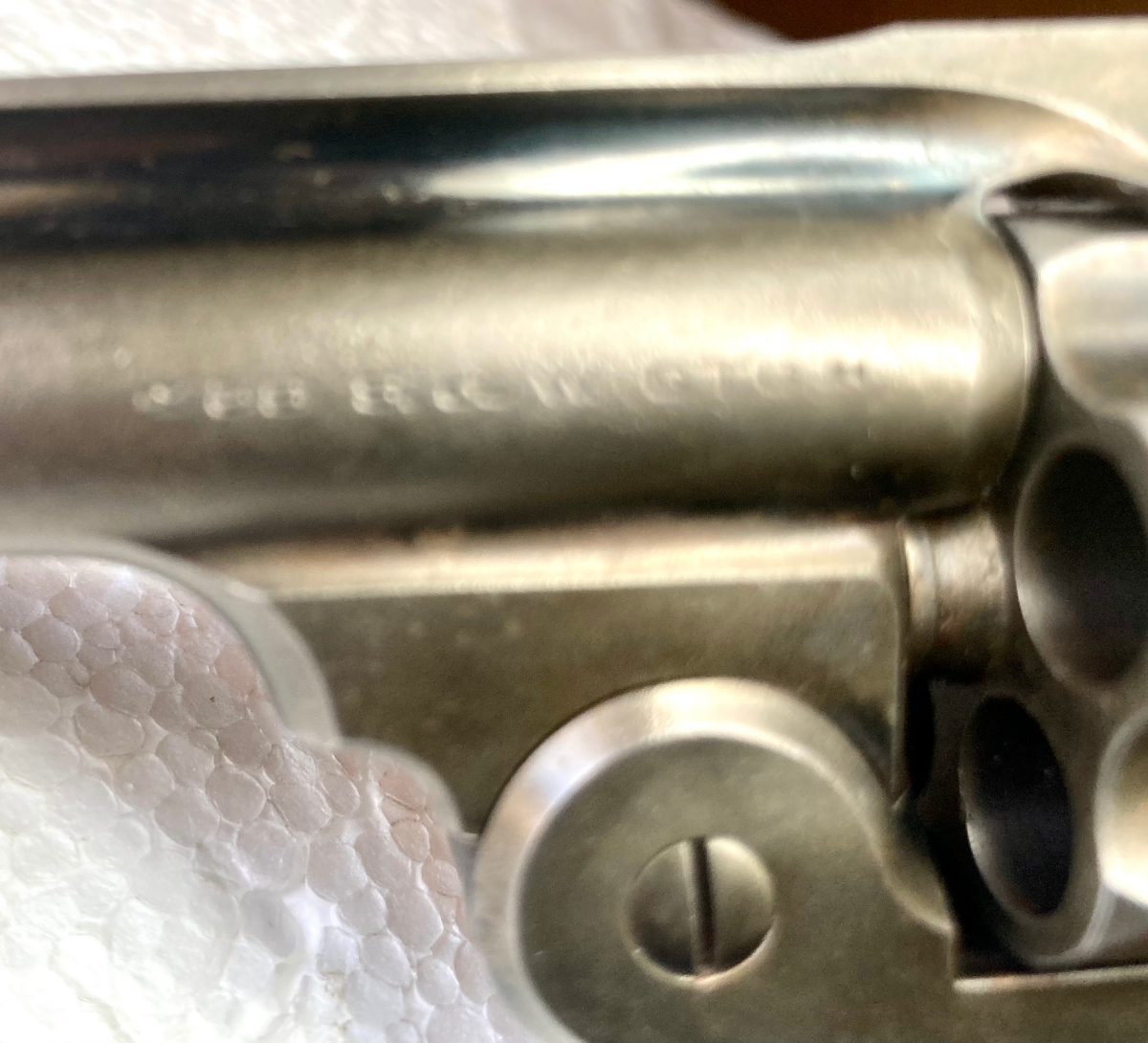
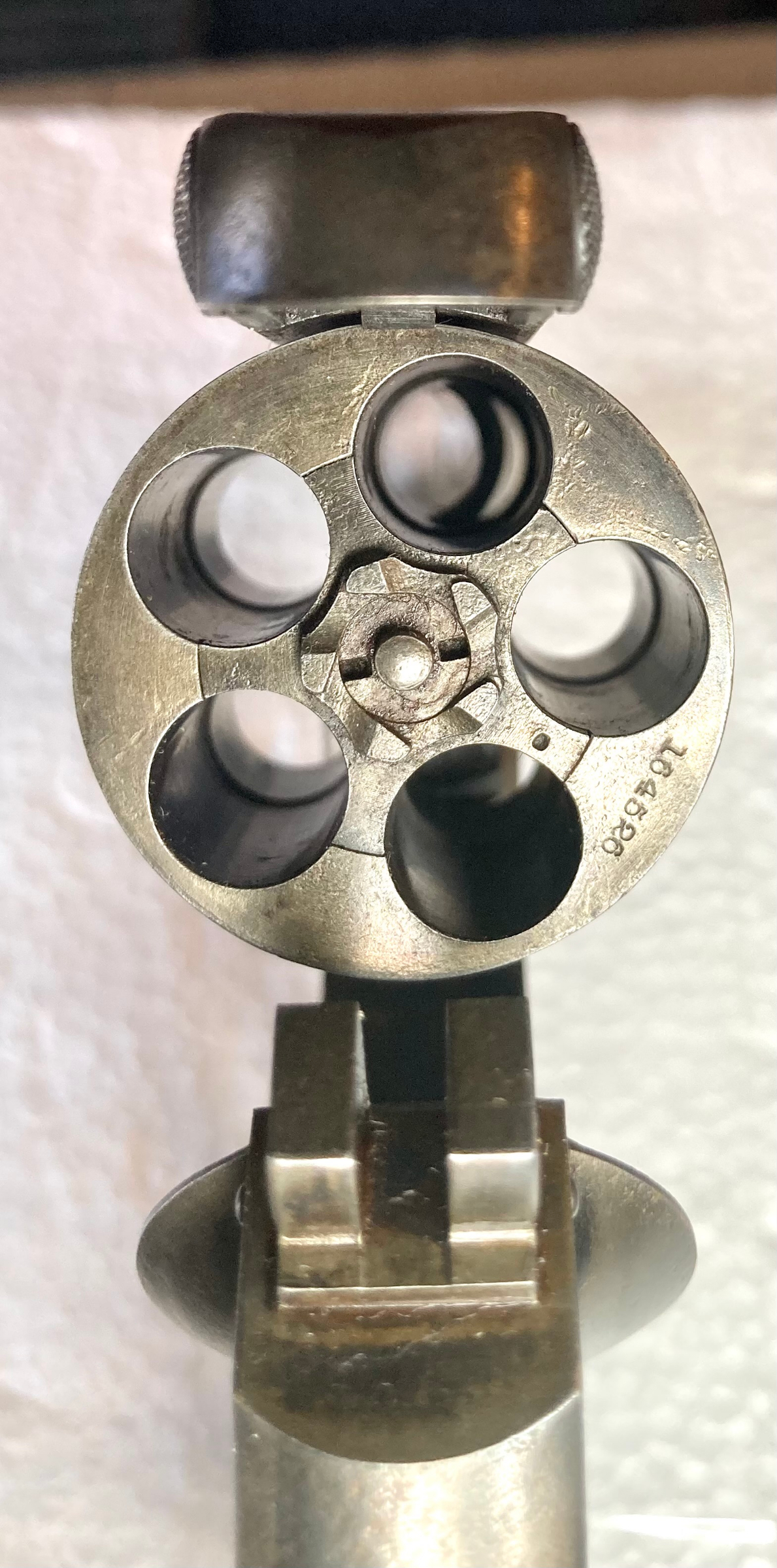


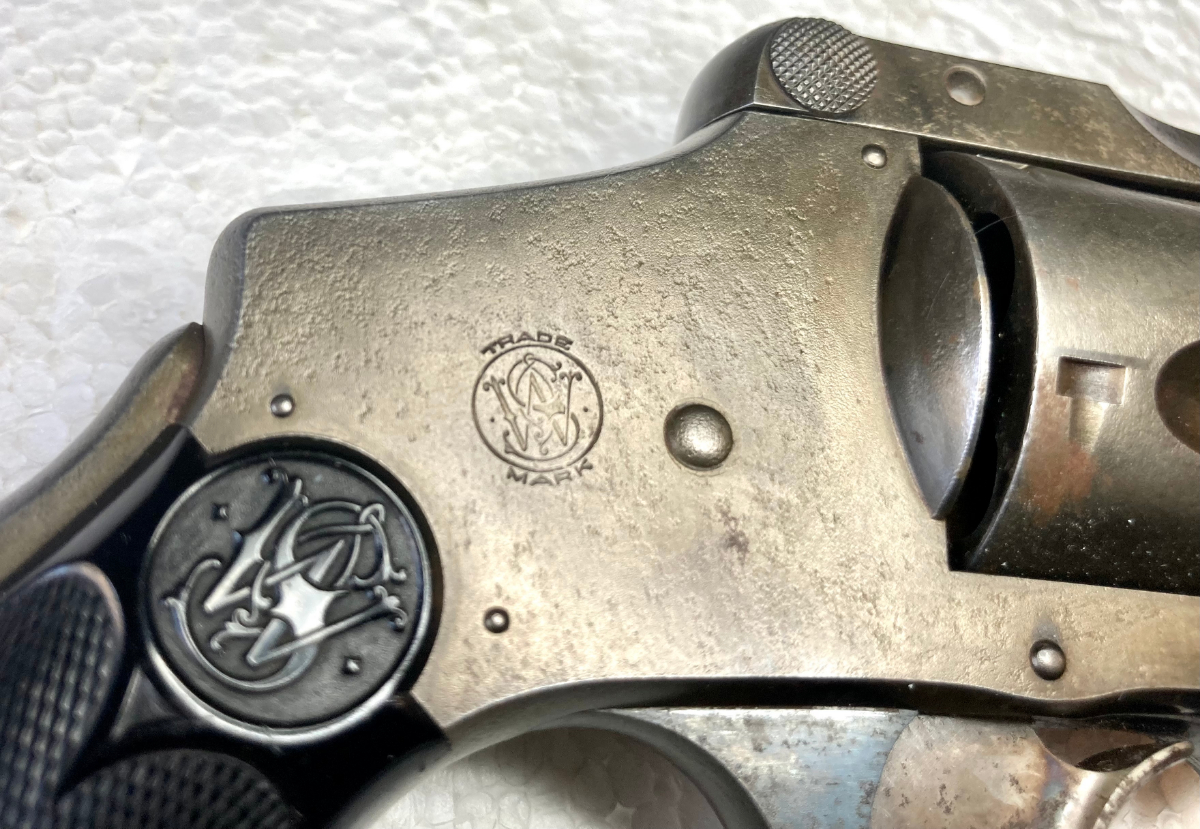
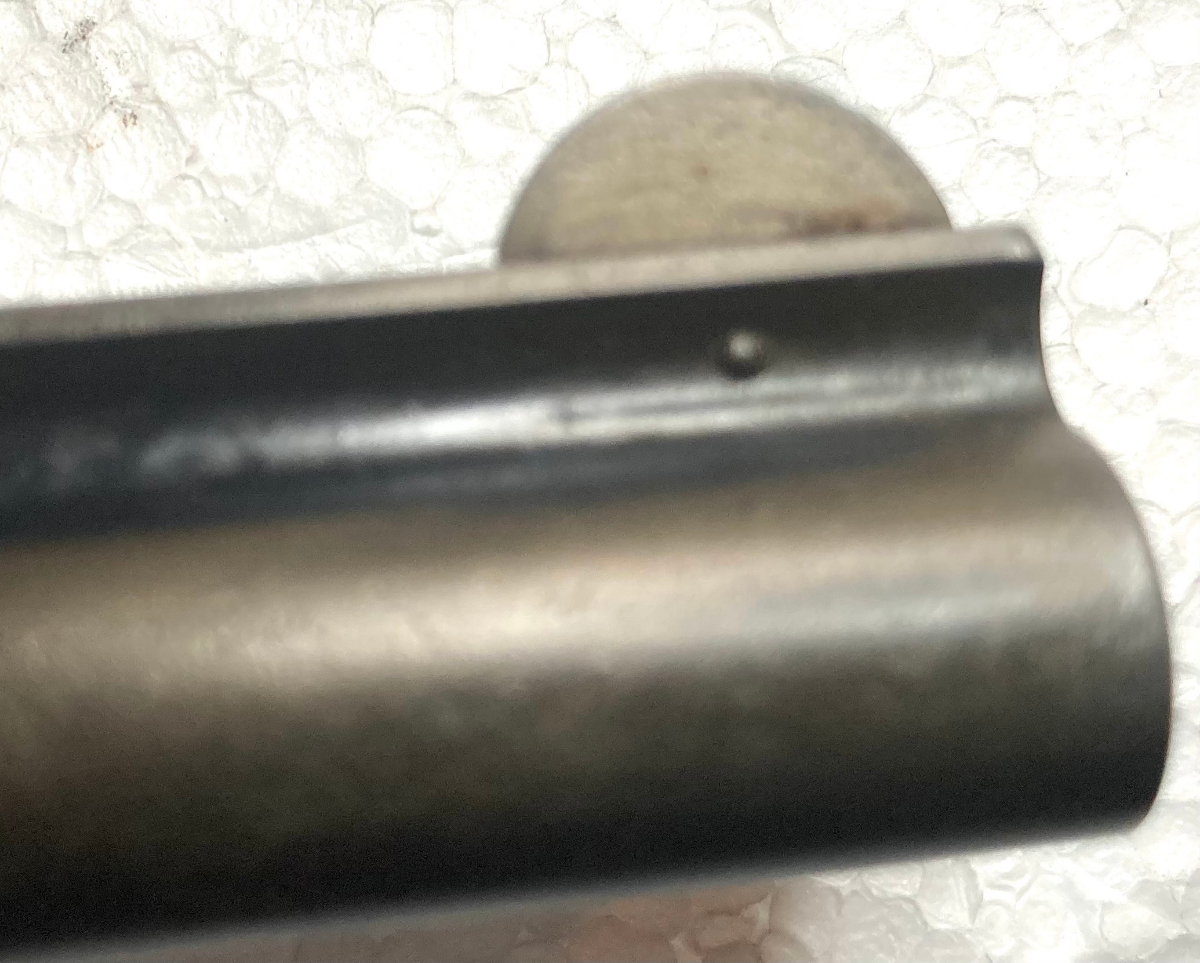
1. Panjandrum – the ultimate invasion weapon
This ungainly device was intended to be used against the beach defences of Hitler’s Atlantic Wall. It consisted of two rocket-propelled wheels, ten feet in diameter, joined by a cylinder filled with explosives. The Panjandrum was designed by the British Admiralty’s Directorate of Miscellaneous Weapons Development, and named after a piece of 18th Century nonsense prose. It would be launched from a landing craft, accelerate up the beach and blow a hole in the sea wall or any other concrete obstacles in its path. Tests in 1943 and 1944 were a disaster. The rockets attached to the wheels often failed or detached themselves, and the Panjandrum went everywhere except in a straight line. It was never used in action.
2. Krummlauf – the gun that fired round corners
The Krummlauf was a curved barrel attachment for the German Sturmgewehr 44 (StG 44) assault rifle, which enabled the weapon to be fired around corners. Its shape meant it could also be used from within a tank to counter enemy infantry armed with mines or other anti-tank weapons. In use, it was found that the barrel attachment became distorted and quickly wore out from the pressure of the rounds being fired. Also, the bullets often shattered on exiting the krummlauf. Although a failure at the time, the concept has been revived with some modern weapons, allowing the user to engage the enemy without exposing themselves.
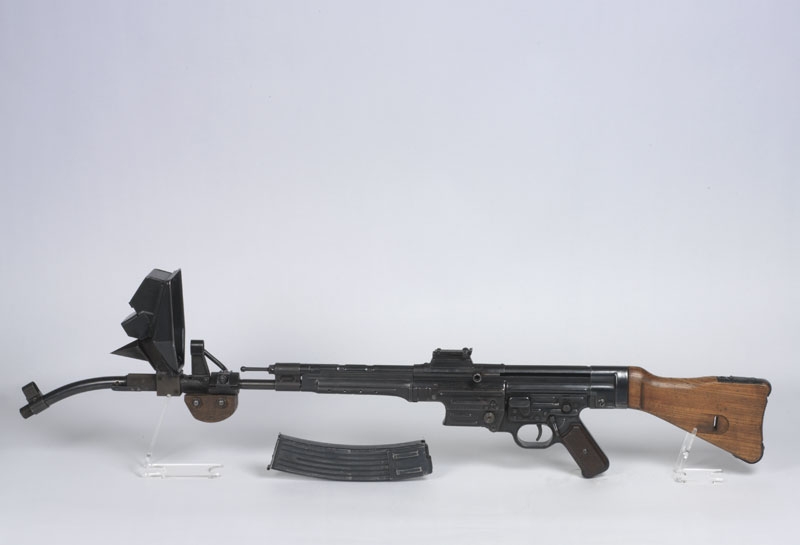
3. Maus – Hitler’s giant tank
The Panzerkampfwagen ‘Maus’ (Mouse), designed by Ferdinand Porsche, was the ultimate expression of Hitler’s desire to produce an indestructible super-heavy tank. It was first proposed in 1942, but few in the German High Command saw the need for this 200 ton monster. Trials began in 1943, but there were constant mechanical problems associated with the drivetrain. The tracks were driven by electric motors powered by a huge Daimler-Benz aircraft engine, but top speed was barely 12mph. The Maus had armour up to 240mm thick and a 12.8cm gun. Although there were plans to build 150 tanks, only two prototypes – two hulls and one turret – were ever completed.
4. Covenanter – Britain’s worst tank
At the outbreak of the Second World War the British army had three types of tank: light tanks for reconnaissance, heavily armoured ‘infantry tanks’ to support frontal attacks, and fast ‘cruiser tanks’ to exploit the gaps made in the enemy defences. One of the latter was the A13 Mk III (Cruiser Tank Mk V) Covenanter. It was designed in 1939, and looked good on the drawing board with its large wheels, low profile and rakishly sloped armour. Large numbers were ordered as Britain frantically re-armed. But its 2-pdr gun and 30mm armour were already outclassed when it was delivered in 1941, and worse defects lurked under the bonnet. The Covenanter suffered from major engine cooling problems which were never overcome. It was so unreliable that it never went to war, and the 1,771 tanks produced were used only for training.
5. TOG – a First World War tank revived
In 1939 the Ministry of Supply set up a committee of the principal tank designers from the First World War, with the object of looking into current British tank development. ‘The Old Gang’, as they were known, came up with their own concept for a heavy tank – known as TOG 1. It was a long, heavily armoured machine, able to cross trenches and terrain cratered by shells. Its armament was mounted in sponsons on either side of the hull. It was in effect a machine designed to re-fight the First World War, and showed just how remote the committee was from modern developments. Its transmission and steering system were also needlessly complex. A second prototype, TOG 2, featured a revolving turret and other improvements, but the tank was still too cumbersome and too complicated to be adopted by the War Office.

6. Maginot Line – failed French defences
The Maginot line was the French response to German rearmament in violation of the Treaty of Versailles. Built between 1929 and 1939, and named after a French defence minister, the line was a complex network of fortresses, bunkers, obstacles and artillery positions along France’s border with Switzerland, Germany and Luxembourg. The line was only partially extended north of this because it was assumed that any future German invasion attempt would be met and defeated in Belgium, hopefully with British assistance. The Maginot Line was seen as a sensible way to maximise the military potential of a limited number of troops, but it also reflected France’s static, defensive mentality which was exploited by Nazi Germany in May 1940. As expected, Hitler’s forces invaded neutral Belgium, but the focus of the attack was through the undefended Ardennes forest. The Maginot Line was quickly outflanked, and French forces caught off balance by the speed of the German advance. Within six weeks France had surrendered.

7. Smith Gun – firepower for the Home Guard
During the Second World War Britain’s Home Guard was famous for making do with outdated weapons as industry concentrated on supplying the regular army with modern equipment. In particular there were very few anti-tank guns, a shortage which retired British Army Major William H Smith intended to put right. His unusual design for a 3-inch smooth-bore gun was put into production in 1941, but only after many safety improvements had been imposed. The Smith Gun had to be tipped onto its side to fire – one of its wheels acting as a baseplate. It had a low muzzle velocity and was only accurate to about 200 yards, assuming ammunition was available to fire – which was rarely. 4,000 guns were made, but they only really had value as propaganda.
8. ‘White Rabbit’/’Nellie’ – the trench digging machine
‘White Rabbit’ or ‘Nellie’ were two of the nicknames given to a trench digging machine built by the Royal Navy and known officially as Cultivator No. 6. It was based on an idea first proposed by Winston Churchill during the First World War, which he revived in 1939, as First Lord Of the Admiralty. ‘Nellie’ was intended to burrow towards the enemy line, excavating a trench wide enough for troops to advance behind. The huge 130 ton machine combined a plough and cylindrical cutter but carried no weapons. The device may have had some merit on the Western Front during the First World War, but was utterly unnecessary on the Second World War battlefield and the idea was eventually dropped after a handful of machines had been constructed.
9. V-3 – Hitler’s ‘Supergun’
The Vergeltungswaffe (Retaliation Weapon) 3 was a German supergun designed to bombard London from an underground complex 100 miles away at Mimoyecques, near Calais in northern France. The V-3 was constructed on a multi-chamber principle whereby secondary charges firing in sequence along the main barrel accelerated a shell to the velocity required to reach its target. A battery of 25 gun tubes were sunk into inclined tunnels in the ground, further protected by a vast concrete slab. It was planned to bombard London at a rate of 600 shells an hour. The Allies assumed the site was part of the V-2 rocket programme and launched bombing attacks in late 1943. Despite intense work by the Germans to finish the project, it was finally put out of action by a raid on 6 July 1944 before a single shell had been fired.
10. Goliath – the robot demolition vehicle
Goliath, or the Leichte Ladungsträger, was a German expendable miniature tracked vehicle designed to deliver an explosive device by remote control. There were two types: battery-powered, with a 60kg charge, or a larger petrol engine version that could carry a 100kg device up to 650m from the controller. Goliath was to be used against buildings, bunkers or even enemy troops and vehicles if the opportunity arose. Some were used to clear minefields. Unfortunately for the Germans, the trailing control wires were vulnerable to being cut, and the vehicle itself was slow and had poor ground clearance. 2,650 were built between April 1942 and September 1944, but were rarely effective. The Germans also experimented with larger, radio-controlled vehicles that could drop a charge close to their intended target and then retire to a safe distance, but these too were a waste of resources.
11. Luftwaffe Heavy Bombers – a project abandoned
In 1936 the Chief of Staff of the new Luftwaffe, General Walther Wever, was killed in an air crash. He had been Germany’s principal advocate of strategic bombing – defeating an enemy country through the systematic attack on its economy and population. It was an idea which had gained ground in Britain, where new heavy bombers were being designed for RAF Bomber Command. In Germany however, Wever’s death – and a lack of resources – saw the abandonment of existing projects for a long-range bomber. Instead, priority was given to smaller aircraft, especially dive-bombers. The Luftwaffe’s prime function would be to support the army over the battlefield. Germany’s lack of a strategic bomber force to hit back at British and Soviet industry was keenly felt as the war progressed. Belated attempts to get a range of new four-engined aircraft into service failed, and only one – the Heinkel He 177 – saw action. There were even designs for an Amerika bomber that could reach New York, but that objective was also never realised.

12. Me 163 Komet – a firework fighter
The tiny Messerschmitt Me 163 Komet was the world’s only rocket-powered fighter. It was designed to intercept high-flying American bombers over Germany. It used a liquid propellant consisting of two volatile substances which ignited when mixed together. Enough thrust was produced to propel the tiny fighter to an altitude of 39,000 feet in 3.45 minutes, with a top speed of over 550mph. Operations began in May 1944 but the Komet was almost too fast and pilots struggled to engage the slow-moving bombers. Also, the rocket engine only had a ‘burn’ of 7 minutes, after which the pilot had to glide back to base. Accidents were common, and even small quantities of the highly unstable fuel could cause explosions if carelessly handled. 364 Komets were built but they shot down only 16 bombers for a loss of at least 13 of their own, which was a poor showing for such a major technological effort.
13. Schwerer Gustav – the German railway gun
A giant railway-mounted gun had been used by the Germans to bombard Paris, during The First World War. The concept of such a colossal weapon was revived in 1936, when Adolf Hitler asked the head of Krupp armaments what type of gun could destroy the fortifications of the Maginot Line. The gun was designated Schwerer Gustav. The 80cm gun, weighed 1,350 tonnes and could project a 7-tonne shell 29 miles. It was completed too late for the German Army’s attack on France, in May 1940. The artillery unit-to which it was allocated in January 1942, named the gun Dora. It fired 47 rounds, against the city of Sevastopol, in the Soviet Union-wearing out the barrel in the process. The second gun produced by Krupp, Schwerer Gustav 2, was never used in action. Schwerer Gustav 2 was placed in storage in March 1943, at Rügenwalde – an artillery firing range. The increased efficacy of aerial bombardment, in the Second World War, made these large guns obsolete.

14. V-2 – Hitler’s revenge weapon
The V-2 rocket was Germany’s most advanced weapon of the Second World War, and also the most wastefully expensive. It was the second of Hitler’s ‘revenge weapons’, a large ballistic missile carrying a one ton warhead, which reached the edge of space before descending at supersonic speed to its target. German rocket development began before the war, but the V-2 was not ready until the autumn of 1944. It was used mainly against London and Antwerp, and there was no defence against it. However, although technically brilliant, and of undoubted propaganda value to an embattled Nazi hierarchy, the weapon inflicted comparatively little damage in return for the vast sums spent on it. The total quantity of explosives delivered by the 3,000 or so V-2s fired was far less than could be dropped in a single raid by RAF Bomber Command. 9,000 people were killed in V-2 attacks. Tragically a far greater number of slave workers died building these weapons.
15. Boulton Paul Defiant – Britain’s flawed fighter
The unusual two-seat Boulton Paul Defiant entered RAF service in December 1939. Its only armament of four .303-inch machine guns was concentrated in a power-operated turret situated behind the pilot. The turret fighter concept was originally designed to combat mass formations of unescorted bombers, with pilots positioning their aircraft alongside or below, so that the gunners could pour fire into their targets. Unfortunately, the aircraft’s extra weight and lack of forward-firing weapons made it vulnerable to conventional enemy fighters. The two Defiant squadrons committed to the Battle of Britain suffered heavy losses and had to be withdrawn. The aircraft had some success later as a night fighter during the Blitz, but was then retired to training duties.
16. Wind Cannon – an experiment in air power
The Windkanone (Wind Cannon) was a bizarre German anti-aircraft weapon. It comprised a large barrel, bent upwards at one end, through which an explosive jet of compressed air was ejected upwards by the ignition of a mixture of hydrogen and oxygen. The aim was to knock down low-flying aircraft. Trials showed that a powerful ‘slug’ of high-velocity air could inflict damage on ground structures, but it was unclear if it would have the desired effect against a small, fast-moving aircraft. In 1945 a wind cannon was installed on a bridge over the River Elbe, but it failed to achieve any results.

17. Kamikaze – Japanese suicide weapons
The Japanese military regarded death in battle as the ultimate way to serve their Emperor. When the war started to turn against Japan, the use of suicide weapons became a natural extension of this ethos – and a symbol of their desperation. The most famous example were the Kamikaze – pilots who deliberately crashed their aircraft into American ships. The Ohka was a manned rocket-powered flying bomb which was carried beneath an aircraft and then released near its target. There were also Shinyo suicide motorboats and Kaiten manned torpedoes. Not all Kamikaze weapons were small. The giant battleship Yamato was sent on a one-way mission during the battle of the Philippines in 1944. It was sunk by US aircraft. Japanese suicide attacks caused heavy casualties on occasions but had no hope of stemming the huge American onslaught. Even some Japanese commanders opposed the tactics as wasteful and futile.

![Soviet troops with 'war dogs'. Wikimedia commons [public domain – no known author] via Wikimedia Commons.](https://www.iwm.org.uk/sites/default/files/styles/text_with_media_desktop_1x/public/2018-07/1_36.jpg?itok=T7n-1fQk)
18. War Dogs – an unconventional Soviet weapon
Dogs played an important role in the Second World War, mainly undertaking security and search duties. In the Soviet Union they were also used for mine detection, message and supply carrying and as weapons of war. The most extreme example were the dogs trained to destroy enemy tanks using explosives strapped to their backs. The animals were trained to run under the vehicles carrying mines which exploded when a protruding lever touched the hull and detonated the charge. Soviet anti-tank dogs were used in 1941 and 1942 but results were poor. The animals often got confused in the heat of battle and some blew up their own handlers. The Germans quickly learned to shoot all dogs on sight. The Soviets soon abandoned this unconventional form of warfare.
![This example of the war balloon was shot down by the United States and later re-inflated. US Army photograph A371800 [public domain] via Wikimedia Commons.](https://www.iwm.org.uk/sites/default/files/styles/text_with_media_desktop_1x/public/2018-07/2_7.jpg?itok=LVg0To7t)
AR 15’s ARE NOT The Problem
The ladies FREE shooting event will be held on Saturday, July 29, 2023, and Sunday, July 30, 2023, at both the Top Gun Shooting Sports (22050 Pennsylvania Road in Taylor, Michigan) and Recoil Firearms (22509 Ecorse Road in Taylor, Michigan).
There will be no charge for the Firearm Instructor’s safety briefing, the usage of a firearm, ammunition, and range time. Participation is 100 percent free for all attendees. No prior firearms training or experience is required of the women who desire to take advantage of the lesson. Further, experienced women merely desiring to improve their marksmanship skills are also welcome to attend.
The moment I sat down I knew something wasn’t quite right. The holster pinched against my body and my pistol now pointed directly through my legs. Add a seatbelt over top and there’s no way I would be able to wrangle the pistol out with any efficiency.
So much emphasis is placed on where and how to carry on your person that carrying inside a vehicle — the thing that gets you to the places you intend to carry — is forgotten. Many just set their firearm in a glove box or center console. Not only is the handgun unsecure in these areas, but it may shift during travel and be out of reach of the driver. It could also be in reach of someone else who is underage or not licensed to carry, presenting a potential legal problem.
Travel Challenges
Every state has different laws and it’s your responsibility to be aware of them. This is of particular importance when traveling through different locales. The United States Concealed Carry Association’s (USCCA) website has a reciprocity map that greatly simplifies the process. Rather than scour dozens of websites for specific information, the USCCA has collected it all in one place. You don’t have to be a member to utilize this interactive map, which is regularly updated. (The date of update is shown at the top of each page.) A colored map populates to show where your permit is valid, where it is not and where it is with restrictions. Scrolling down details your state’s laws for carrying in a vehicle and at roadside rest areas.
Over the past year, I have been traveling more. Experience has opened my eyes to problems I never foresaw. Carrying inside a vehicle is much like carrying on your body: One size does not fit all. On a long road trip, I started out wearing a belly band and keeping the handgun within reach as a passenger. I ended up removing the belly band because it was uncomfortable, only wearing it when I left the car to use a rest stop or get gas. When it was my turn to drive, I did not have access to my firearm. One state I traveled through didn’t honor my concealed carry permit. I was permitted to have a concealed handgun inside the vehicle because I had a license from my home state, but not outside — not even at roadside rest areas. I used a lockbox to secure my firearm in these situations.
Car Travel Challenges
I quickly realized the value of a lockbox. I started with a small one that barely held my pistol. It opened with a barrel key and secured under the driver’s seat by a metal cable. Someone could cut through it, but they’d have to come prepared with specific tools. If driving through a state that doesn’t allow concealed carry inside a vehicle, a lockbox provides a safe and secure option that keeps the firearm out of reach. Other times, you can’t have your firearm on your person, or you choose not to, but don’t want to leave it unattended.
During a recent trip, I needed to access the lockbox in the dark. It was black underneath the driver’s seat; the small automatic lights above the center console didn’t quite cut it. I struggled to be inconspicuous and situationally aware at the same time. I couldn’t see the box, but could feel it with my hand. I fumbled with the key. I would have felt better with my headlights on, but my car key was linked to the same ring as the lockbox barrel key. Once I opened the box, I had to find the pistol by feel and load it in the dark. All this time, I felt extra vulnerable. Though only minutes, it felt like hours.
Hornady Keypad Vault
I now use the Hornady Keypad Vault. It has the same function as my prior lockbox, but is far easier and more spacious. The box is made of 16-gauge steel, complete with a security cable. It can be opened with a barrel key, but also with a programmable keypad — powered by four AA batteries — that accepts four- and six-digit codes. If you enter the incorrect code, the light turns red and an alarm sounds. It is certainly annoying and likely a deterrent to anyone trying to access the interior. What I appreciated most was the extra room and an automatic light. The light eliminates my former problem, while the spacious interior can hold more than one pistol, ammunition and other valuables. The keypad is not only convenient, but it also allows someone else you trust to access the box if need be, without the key.
Auto Access Options
What about protection while driving? Some people still toss their firearm in a glove box or console, but within a holster. This still does not make it efficient to draw, as there is no opposing force because the holster isn’t anchored. The rig will also not have a consistent orientation for the draw. You’d need two hands, at least one of which is likely still on the wheel.
Options like Alien Gear’s Hook and Loop holster turn nearly any flat surface into a mounting location. This may be the inside of a glove box or area beside your steering wheel. Glove boxes and center consoles may be lockable, but in the time of an emergency, especially with another passenger present, it can be hard to reach and obvious. How many times have you tried to grab sunglasses but your passenger’s elbow is holding the console hostage? Keep in mind you may need a holster with a reverse draw to your dominant hand, depending upon where you decide to mount your gun.
Carry for the Draw
Dozens of options exist for vehicle carry, but keep in mind every vehicle model is different, as is the preference of the driver. If you are planning to resell your vehicle, or if it’s a rental or lease, drilling holes into the car is not an option.
Alien Gear’s ShapeShift holster line offers a variety of on- and off-body carry options utilizing the same pieces, minimizing cost. I was particularly impressed with the ShapeShift Driver Defense holster. This system utilizes adjustable thick straps threaded through your car seat to hold a mount that rests between your legs — no drilling or permanent car modifications required. I was skeptical at first, wondering if my legs would hit the holster, or if the straps would be uncomfortable to sit on. I did have an issue hitting the holster when exiting the vehicle, but this is only because I’m short and my seat is pushed nearly all the way up … Retention is adjustable, but jostling and hitting the holster did not knock the gun loose. A thumb release placed where my thumb naturally falls during draw released the pistol smoothly. It is also not easily visible to anyone outside the vehicle and the holster can be taken off, leaving the straps intact
if desired.
When I started driving, my best friend Liam threw a fit when he realized I carried nothing with me in my car. No emergency supplies, no way to break the window and so on. Looking out for me in his own way, he brought over a flashlight and tactical pen and demanded I put them in my car. I never forgot it and left the Big Larry flashlight in my glove box ever since. It has a strobe, but I always thought of it as just for light if the car broke down or I needed to see. Only recently have I realized how disorienting light can be in a self-defense situation.
The trickiest things about carrying inside a vehicle are being mindful of changing laws driving cross country, being able to access the arm while driving and ensuring it remains out of reach of others. I use a combination of all the above — it doesn’t hurt to have options.
